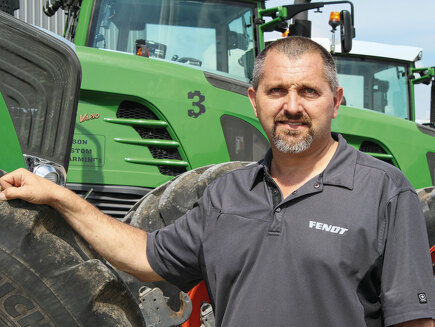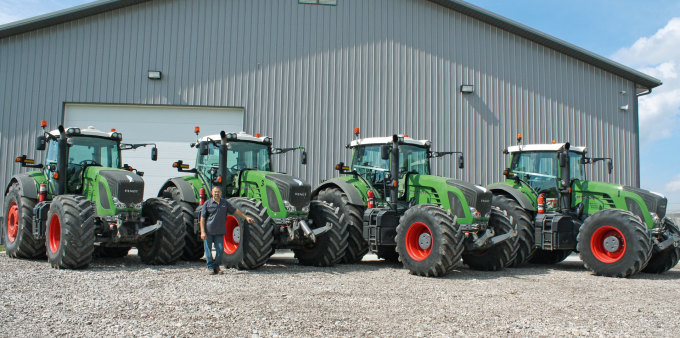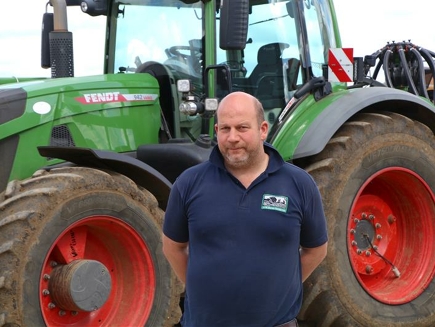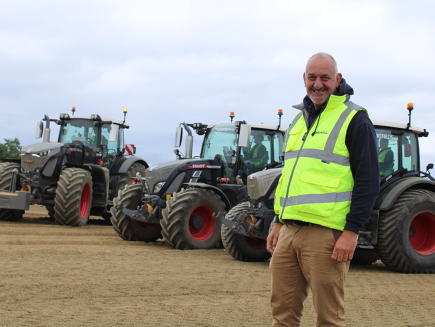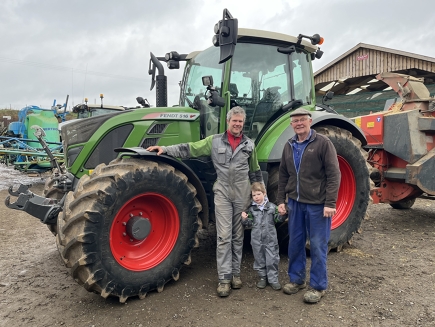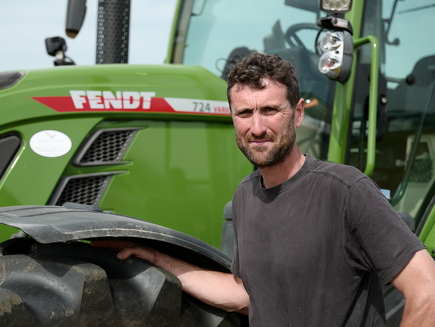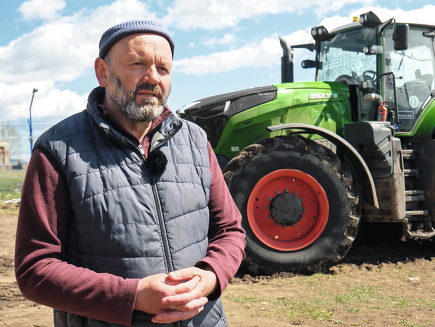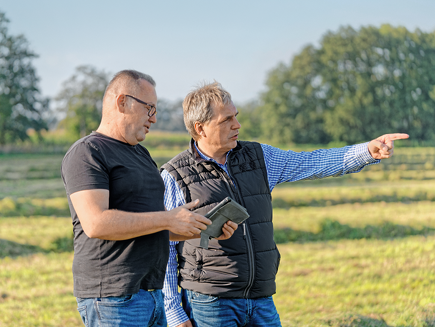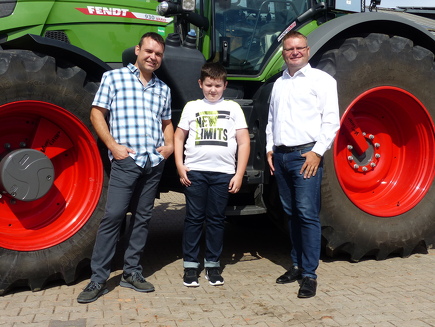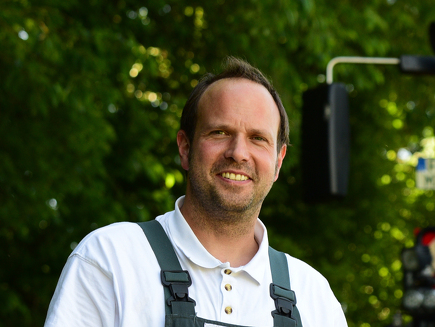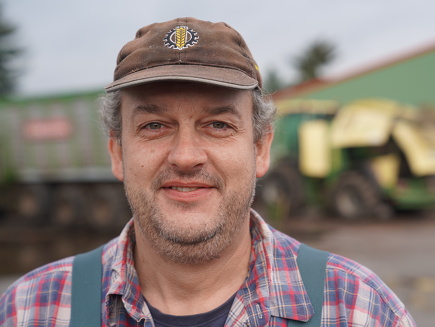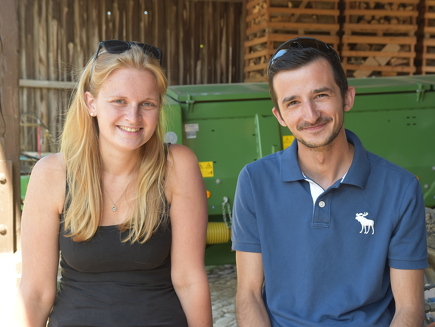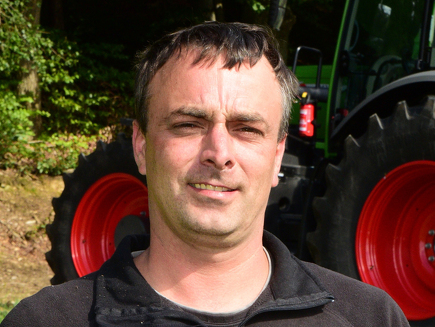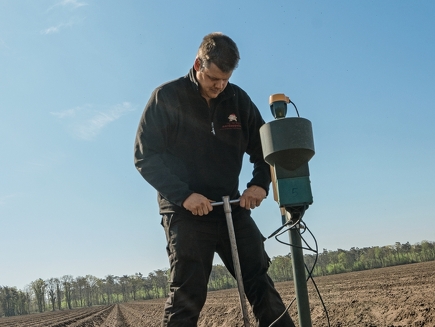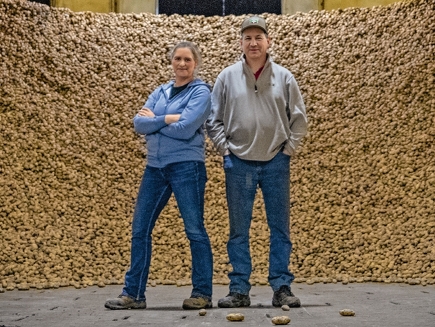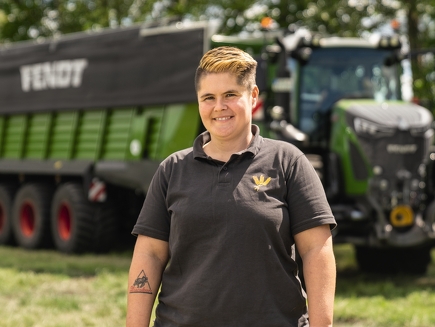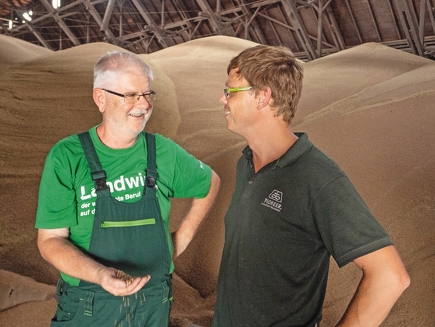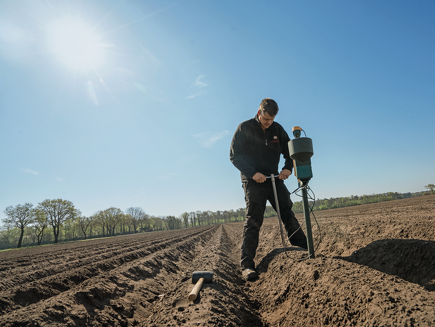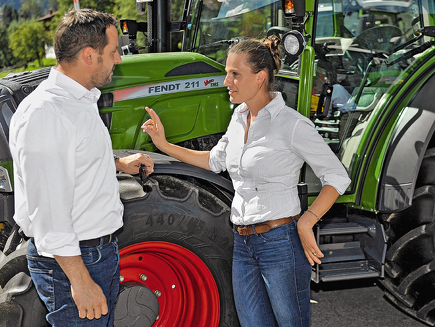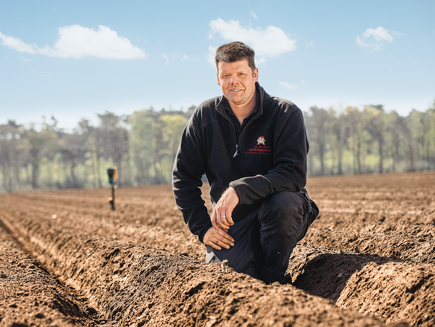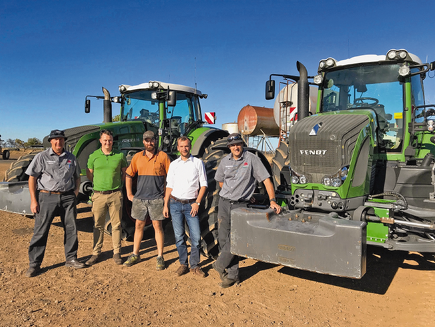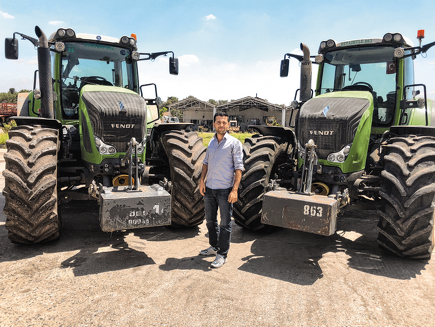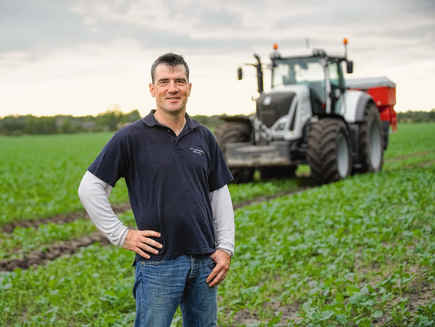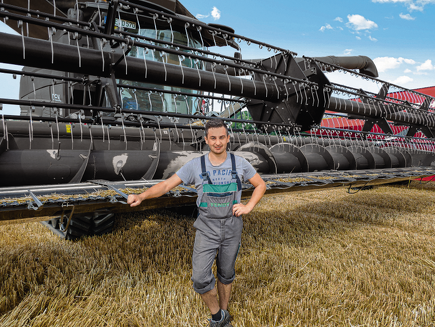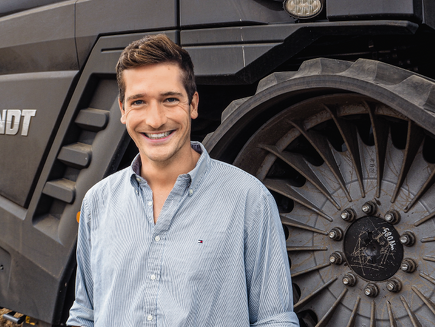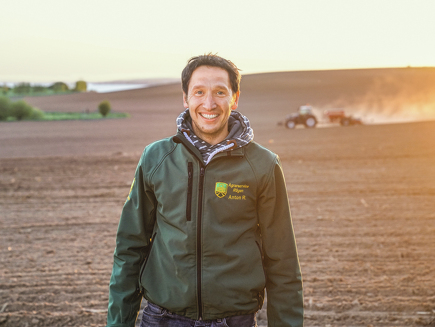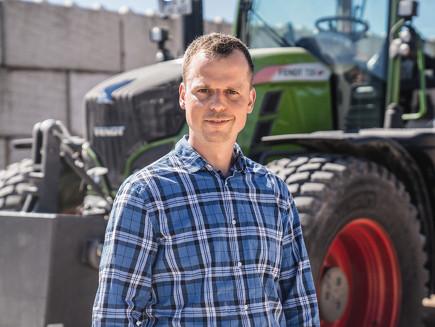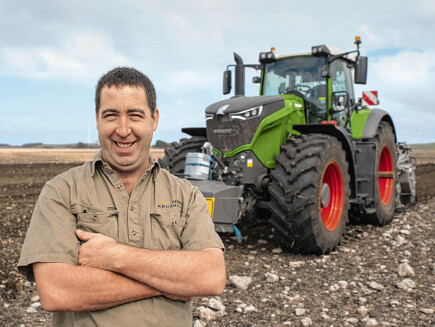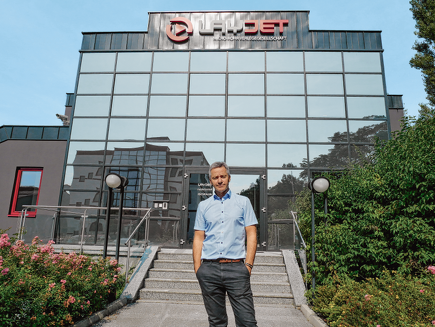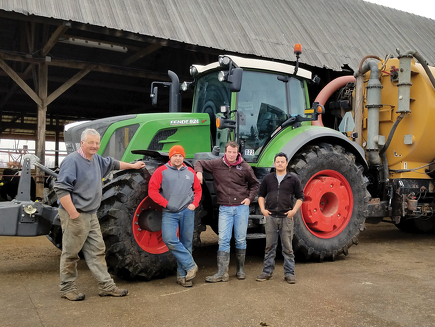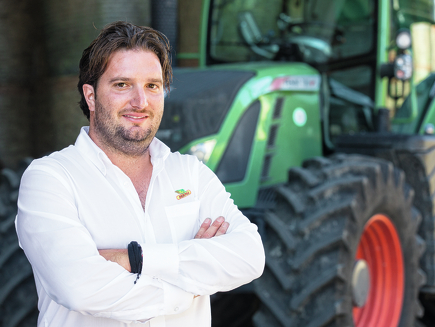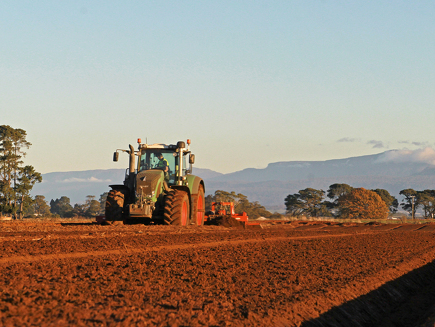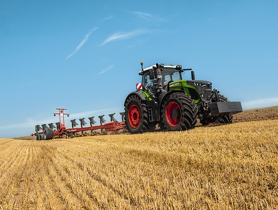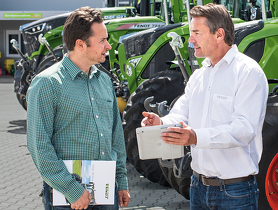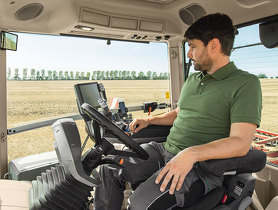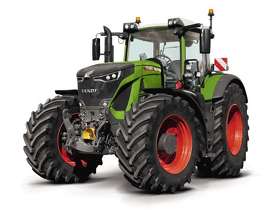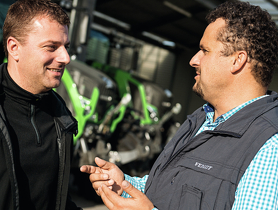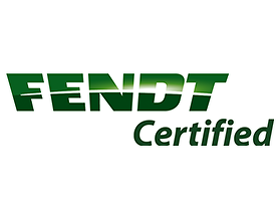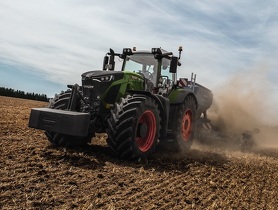Although Orr and his father grow around 850 acres of corn and soybeans on their own farm near Apple Creek, Ohio, their biggest need for Fendt tractors is for use in their custom harvesting business. Jon, who is also co-owner of Orrson Custom Farming with his father, recalls, “You could say we’ve also been involved in custom harvesting since 1946 when my grandpa cut silage for a neighbor with a one-row, pull-type harvester.”
In fact, the Orrs have since traded the original Model 924 for a replacement and ultimately traded that 924, along with their competitive units, on four new Model 927s. Orr, who is also serving as president of the U. S. Custom Harvesters, Inc., explains, “We primarily focused on the family dairy until 1995. However, when the cows left in ’95, we began to do even more custom work, eventually going on the road in ’97.” Equipped with two self-propelled forage harvesters, a self-propelled mower conditioner, four Fendt Model 927 tractors, four Sunflower sidedump forage wagons and 12 trucks, Orrson Custom Farming travels from Georgia to Michigan each year putting up silage. In a typical year, Orr and a crew of 16 to 18 people head to Georgia in the spring to harvest wheat and ryegrass silage before returning to the farm to plant row crops. Then, it’s back to Georgia for corn silage, at which point they work their way back north… ultimately ending up in Michigan for corn silage. Along the way, his four Fendt tractors handle everything from moving silage to packing it in the silo. “Every day and every job is different,” he says. “In the spring, we usually have one tractor on a merger, which brings one or more windrows together ahead of the chopper,” he explains. “Plus, we generally have one or more units equipped with a front-mounted blade to push, level and pack silage. Again, you won’t find anything that beats a Fendt, because when we’re pushing silage, we’re just going forward and back all day long,” he continues.
“However, the Fendt transmission shifts so smoothly you’re not worn out at the end of the day. Plus, you can preset a forward and reverse speed and make it even easier.” In the meantime, at least two more of the 927 models will be pulling Sunflower side-dump wagons. However, on one of the jobs this spring, Orr had all four tractors on side-dump carts, due to the muddy conditions in the field. Fortunately, Orr says his Fendt tractors are even more fuel efficient when transporting silage. Noting that he and his crew deal with different applications with each job, Orr says he is particularly pleased with the fuel savings. In fact, one glance at the Varioterminal while planting soybeans this spring showed the tractor he was driving at the time had used 7,148 gallons of fuel during 3,257 hours of varied applications for an average of 3.6 gallons of fuel per hour.
“The other thing is we have all of the tractors equipped with the big Michelin tires, instead of duals. So you won’t find a tractor that’s more comfortable to drive, whether it’s on the road, in the field or on top of a load of silage.
“This is the fifth season on those four 927 models,” he says, noting that the 3-year/3,000-hour Gold Star Customer Care program took care of his scheduled maintenance and lowered his cost of ownership. “So, when I get ready to trade, I’ll probably trade all four at once for four new ones. The thing we like most about the Fendt tractors, besides the fuel economy and the excellent service from Lowe and Young, is the reliability,” he continues. “We need them to run every time we turn the key and that’s what they do.”

